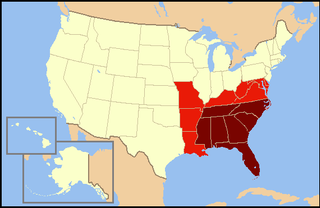
Bank robbery is the crime of stealing money from a bank, specifically while bank employees and customers are subjected to force, violence, or a threat of violence. This refers to robbery of a bank branch or teller, as opposed to other bank-owned property, such as a train, armored car, or (historically) stagecoach. It is a federal crime in the United States.

Lester Joseph Gillis, known by the alias George Nelson, better known as Baby Face Nelson, was an American bank robber in the 1930s. Gillis was given the nickname Baby Face due to his youthful appearance and small stature, although few dared call him "Baby Face" to his face. Criminal associates instead called him "Jimmy". Nelson entered into a partnership with John Dillinger, helping him escape from prison during the famed Crown Point, Indiana Jail escape, and was later labeled along with the remaining gang members as public enemy number one.

The James–Younger Gang was a notable 19th-century gang of American outlaws that centered around Jesse James and his brother Frank James. The gang was based in the state of Missouri, the home of most of the members.

Kate Barker, better known as Ma Barker and sometimes as Arizona Barker, was the mother of several American criminals who ran the Barker-Karpis gang during the "public enemy era" when the exploits of gangs of criminals in the Midwest gripped the American people and press. She traveled with her sons during their criminal careers.

Alvin Francis Karpis, a Depression-era gangster nicknamed "Creepy" for his sinister smile and called "Ray" by his gang members, was a Canadian-born criminal of Lithuanian descent known for being a leader of the Barker–Karpis gang in the 1930s. Karpis led the gang along with Fred Barker and Arthur "Doc" Barker. There were only four "public enemies" ever given the title of "Public Enemy #1" by the FBI and he was the only one to be taken alive. The other three, John Dillinger, Pretty Boy Floyd, and Baby Face Nelson, were all killed before being captured. He also spent the longest time as a federal prisoner at Alcatraz Federal Penitentiary, serving twenty-six years.
Egan's Rats was an American organized crime gang that exercised considerable power in St. Louis, Missouri, from 1890 to 1924. Its 35 years of criminal activity included bootlegging, labor slugging, voter intimidation, armed robbery, and murder. Although predominantly Irish-American, Egan's Rats did include a few Italian-Americans and some Jewish immigrants, most notably Max "Big Maxie" Greenberg.

Arthur R. Barker was an American criminal, the son of Ma Barker and a member of the Barker-Karpis gang, founded by his brother Fred Barker and Alvin Karpis. Generally known as "Doc", Barker was typically called on for violent action, while Fred and Karpis planned the gang's crimes. He was arrested and convicted of kidnapping in 1935. Sent to Alcatraz Federal Penitentiary in 1936, he was killed three years later while attempting to escape from the Rock.
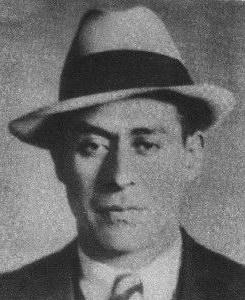
Franklin Rio also known as "Frank Rio" and "Frank Cline" was a member of Al Capone's Chicago-based criminal organization known as the Chicago Outfit. He was also an alleged gunman in the famous 1929 St. Valentine's Day Massacre.

John Paul Chase was an American bank robber and Depression-era outlaw. He was a longtime criminal associate of the Karpis-Barker Gang and most notably Baby Face Nelson who later brought him into the John Dillinger gang. FBI Director J. Edgar Hoover once referred to Chase as "a rat with a patriotic-sounding name". Chase and Nelson continued to rob banks with John Dillinger until Dillinger's death in July 1934. After the death of Nelson in November 1934, Chase fled back to California where he was arrested a month later on December 27, 1934. Chase was sent to Alcatraz where he became one of the longest-serving inmates;.

Russell Lee "Boobie" Clark was an American thief, bank robber and prison escapee. He is best known as the "good natured" member of the John Dillinger gang and participated in armed holdups with them in a three-month crime spree across the Midwestern United States from October 1933 until his capture in January 1934.
The Cretzer-Kyle Gang was a Depression-era criminal group led by Joseph "Dutch" Cretzer and Arnold Thomas Kyle during the mid-to late 1930s. Largely active in the West Coast, they were one of the few groups to gain national attention outside the Midwest and also one of the last groups to be captured by the FBI at the end of the decade. Cretzer was killed in a failed attempt to escape Alcatraz resulting in the 1946 prison riot.
The Denver Mint robbery occurred on the morning of December 18, 1922, when five men hijacked a Federal Reserve Bank delivery truck outside the U.S. Mint in Denver, Colorado. At the time of the robbery, around 10:30 am, the truck was being loaded with $200,000 on West Colfax Avenue. A black Buick touring car then pulled up and two men jumped out firing sawed-off shotguns, while a third grabbed the money bags. U.S Mint Police Officers inside the mint, numbering some 50 men, quickly responded by returning fire. One of the robbers was said to have "taken a [shotgun] round in the jaw". The gang however, remaining at the scene for only a minute and a half, had already made their getaway.
Russell "Slim Gray" Gibson was an American bank robber and Depression-era outlaw associated with Alvin Karpis and the Barker Gang during the late 1920s and 1930s. Gibson spent much of his early criminal career with the Central Park Gang based in Tulsa, Oklahoma which included the Barkers, Volney Davis, Ray Terrill and other local criminal figures. He participated in his first major robbery when he teamed with Neal Merritt and James "Cowboy" Long to rob a bank messenger in Oklahoma City of $75,000. Gibson was arrested for this robbery but escaped from county jail prior to his trial.
The Holden-Keating Gang was a bank robbing team, led by Thomas James Holden (1896–1953) and Francis Keating, which was active in the Midwestern United States during the 1925 and 1939. Holden was described by a spokesman for the FBI as "a menace to every man, woman and child in America" and was the first fugitive to be officially listed on the FBI's Top Ten Most Wanted List in 1950.

Harold Eugene "Eddie" Green was an American bank robber and Depression-era outlaw during the 1930s, best known as a member of the John Dillinger gang. He was also associated with Frank "Jelly" Nash, Volney Davis and the Barker-Karpis Gang in his early career.
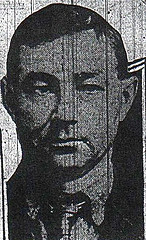
Herman Karl Lamm, known as Baron Lamm, was a German bank robber. His robberies paid close attention to detail of the target properties, and he has been described as "the father of modern bank robbery". A former Prussian Army soldier who immigrated to the United States, Lamm believed a heist required all the planning of a military operation. He pioneered the concepts of meticulously "casing" a bank and developing escape routes before conducting the robbery. Using a meticulous planning system called "The Lamm Technique", he conducted dozens of successful bank robberies from the end of World War I.
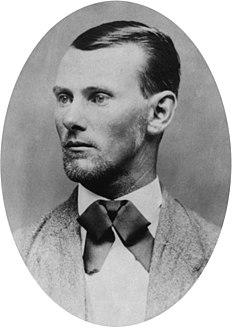
Jesse Woodson James was an American outlaw, bank and train robber, guerrilla, and leader of the James–Younger Gang. Raised in the "Little Dixie" area of western Missouri, James and his family maintained strong Southern sympathies. He and his brother Frank James joined pro-Confederate guerrillas known as "bushwhackers" operating in Missouri and Kansas during the American Civil War. As followers of William Quantrill and "Bloody Bill" Anderson, they were accused of participating in atrocities against Union soldiers and civilian abolitionists, including the Centralia Massacre in 1864.
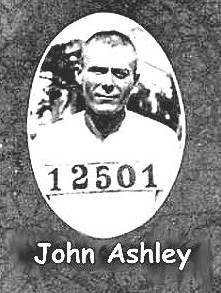
John Ashley was an American outlaw, bank robber, bootlegger, and occasional pirate active in southern Florida during the 1910s and 1920s. Between 1915 and 1924, the self-styled "King of the Everglades" or "Swamp Bandit" operated from various hideouts in the Florida Everglades. His gang robbed nearly $1 million from at least 40 banks while at the same time hijacking numerous shipments of illegal whiskey being smuggled into the state from the Bahamas. Indeed, Ashley's gang was so effective that rum-running on the Florida coast virtually ceased while the gang was active. His two-man raid on the West End in the Bahamas in 1924 marked the first time in over a century that American pirates had attacked a British Crown colony.
Pearl Elliott was a notorious madam of Kokomo, Indiana, United States. She was best known as an early associate of the Prohibition era gangster Harry Pierpont and later of the bank robber John Dillinger. Along with the gun moll Mary Kinder, she was one of two women listed on the Chicago Police Department's Public Enemies list in 1933.

